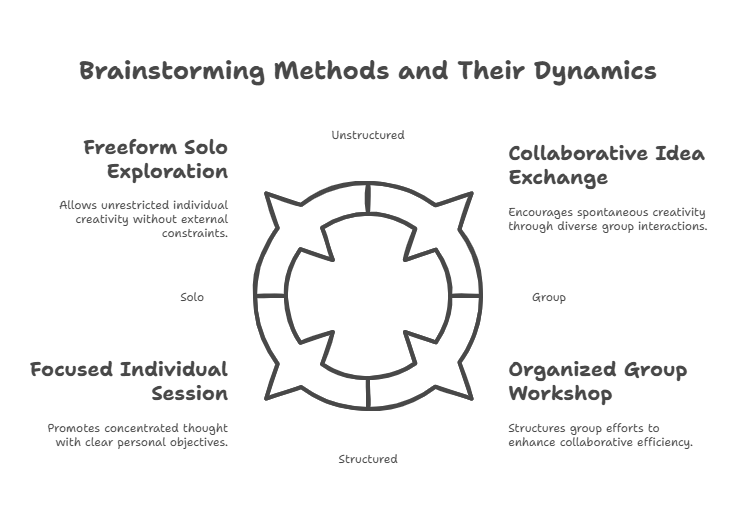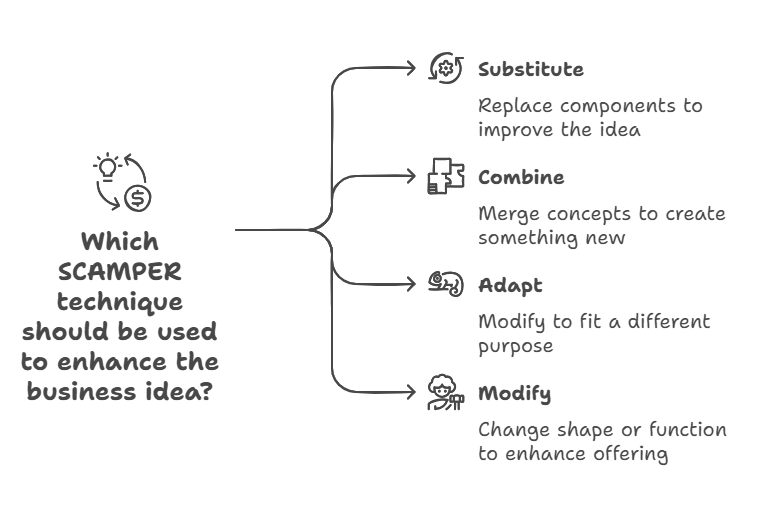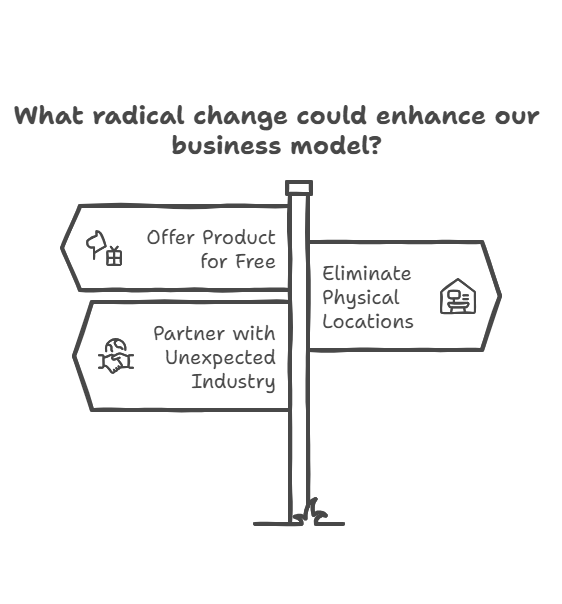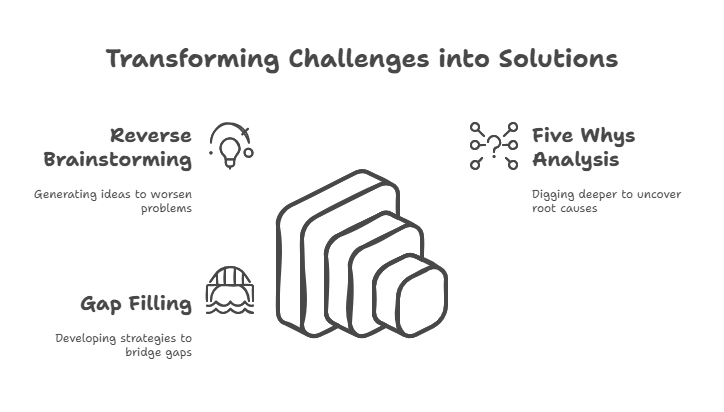How To Come Up With An Idea For A Business
Article about How To Come Up With An Idea For A Business

What Are the Best Strategies for Generating Business Ideas?
Introduction
Why a Great Idea is the Cornerstone of Every Successful Business
Behind every thriving business lies one simple truth: it all starts with a brilliant idea. Whether it’s a groundbreaking product, a fresh twist on an old concept, or a service that fills a much-needed gap, the idea serves as the foundation upon which everything else is built. The right idea can set you apart, resonate with your audience, and unlock doors to lasting success.
The Role of Creativity and Innovative Thinking
In today’s fast-paced and competitive world, relying solely on conventional approaches can leave you lagging behind. Creativity and innovative thinking are essential not only to stand out but to also identify opportunities that others might overlook. These skills empower you to reimagine what’s possible, turning problems into possibilities and dreams into tangible outcomes.
Techniques to Spark Your Next Big Idea
The good news? Generating a game-changing idea isn’t about waiting for lightning to strike—it’s about equipping yourself with the right tools and strategies. In this blog, we’ll explore proven techniques like brainstorming, mind mapping, and SCAMPER, alongside unconventional methods such as random word association and storyboarding. Whether you’re starting from scratch or refining an existing concept, these approaches will help you unlock the creative potential within.
1: Setting the Stage for Idea Generation
The Importance of Fostering a Creative Mindset
Before diving into techniques, it’s essential to cultivate the right mindset. Creativity thrives in an open, flexible, and curious mental space. Let go of self-doubt and judgment, and embrace a “yes, and…” attitude—a principle borrowed from improv that encourages building on ideas rather than shutting them down. Creativity is like a muscle: the more you train it, the stronger it becomes.
Preparing the Right Environment
Your environment plays a pivotal role in nurturing creativity. A clutter-free, comfortable space can clear your mind and reduce distractions. Surround yourself with inspiration—whether it’s through art, music, or thought-provoking quotes—and ensure your tools for idea generation (like notebooks, whiteboards, or brainstorming apps) are readily accessible. For team sessions, establish ground rules that prioritize respect and inclusivity, creating a safe space for all ideas to be heard.
By fostering a creative mindset and preparing the right environment, you set the stage for innovation to flourish. Once you’ve laid this groundwork, you’re ready to dive into the techniques that will help transform sparks of inspiration into actionable business concepts.
2: Core Techniques for Generating Business Ideas
1. Brainstorming
Explanation and Process
Brainstorming is a dynamic technique designed to generate a wide range of ideas in a short amount of time. The process involves gathering a group of people or working individually to explore solutions in a non-judgmental environment. The goal is quantity over quality initially—to unlock creativity and allow ideas to flow freely.
Tips for Productive Brainstorming Sessions
- Set clear objectives to provide direction for idea generation.
- Create a judgment-free zone where participants feel comfortable sharing thoughts.
- Use prompts or questions to spark new ideas and keep the session focused.
- Limit sessions to 30-60 minutes to maintain energy and engagement.
Benefits of Group vs. Solo Brainstorming
- Group brainstorming fosters collaboration, builds on diverse perspectives, and often leads to unexpected ideas.
- Solo brainstorming allows for deeper focus and freedom to explore unconventional thoughts without external influence.

Example:
"To streamline your idea validation process and gain valuable insights, consider using NexIdea, a tool designed to help entrepreneurs assess the feasibility and potential of their business ideas. ."
2. Mind Mapping
How to Create a Mind Map Effectively
Mind mapping is a visual tool for organizing ideas. Start by writing your central idea in the middle of a page or digital canvas. Draw branches to represent related concepts, then further sub-branches for finer details. Use keywords, colors, or symbols to make connections clear and memorable.
Examples of Applications in Business Idea Development
- Exploring customer pain points and potential solutions.
- Identifying market trends and how they relate to your business concept.
- Visualizing the steps required to execute a business idea.
3. SCAMPER Technique
Breakdown of the Seven SCAMPER Prompts
- Substitute: Replace components, materials, or processes to improve the idea.
- Combine: Merge different concepts or products to create something new.
- Adapt: Modify an idea to fit a different purpose or market.
- Modify: Change the shape, size, or function to enhance the offering.
- Put to Another Use: Find new applications for existing ideas or products.
- Eliminate: Simplify by removing unnecessary elements.
- Reverse: Reimagine the idea by flipping its order or function.

Examples of How to Use SCAMPER to Innovate
- A restaurant owner uses SCAMPER to create a takeout-friendly version of their dining experience.
- A tech company adapts existing software for a niche market like healthcare.
4. Role Playing
Steps to Adopt Different Perspectives
- Define the roles to explore, such as customer, competitor, or investor.
- Step into the mindset of each role and consider their needs, pain points, and motivations.
- Document observations and insights gained from each perspective.
Benefits of Understanding Customer and Competitor Viewpoints
- Helps identify unmet needs and opportunities for differentiation.
- Provides insights into improving user experience or positioning your product more effectively.
5. Random Word Association
Explanation of the Method
Choose a random word unrelated to your business idea. Brainstorm connections between this word and your challenge or concept. This technique helps disrupt habitual thinking patterns and encourages lateral thinking.
How It Helps Break Conventional Thinking Patterns
- Promotes unconventional solutions by forcing the mind to make unexpected connections.
- Sparks creativity by introducing an element of surprise and novelty.
6. "What If" Scenarios
How to Pose Powerful Hypothetical Questions
Ask questions like:
- "What if we could offer our product for free?"
- "What if we eliminated all physical locations?"
- "What if we partnered with an unexpected industry?"
Case Studies or Examples of This Technique in Action
- A software company asks, "What if we made our platform open-source?" leading to increased user adoption and community-driven improvements.
- A retail brand considers, "What if we sold entirely online?" and successfully transitions to an e-commerce model.

7. Storyboarding
Step-by-Step Guide to Creating a Storyboard for Your Idea
- Define the narrative: What problem does your idea solve, and how?
- Sketch key moments or stages in the customer journey.
- Add quotes, visuals, or data points to enrich the story.
- Review and refine the storyboard to ensure clarity and flow.
How Visual Narratives Clarify and Enhance Ideas
- Helps identify gaps or inconsistencies in the concept.
- Makes complex ideas easier to communicate to stakeholders.
8. Social Listening
Tools and Techniques for Effective Social Listening
- Use platforms like Twitter, Reddit, or LinkedIn to observe discussions in relevant communities.
- Employ tools like Hootsuite or Brandwatch to monitor trends and sentiment.
- Join forums or groups related to your industry to engage with potential customers directly.
How to Identify Trends and Gaps in the Market
- Analyze frequently discussed pain points or unmet needs.
- Look for emerging topics or products gaining traction within your target audience.
- Use insights to refine your business idea and ensure market relevance.
For a comprehensive approach to idea validation, explore NexIdea and unlock the potential for your next big business idea. .
3: Additional Techniques to Consider
Reverse Brainstorming: Turning Problems into Opportunities
Reverse brainstorming flips the traditional brainstorming process on its head by focusing on problems instead of solutions. Start by identifying challenges or obstacles, then brainstorm ways to exacerbate them. This counterintuitive approach often reveals innovative ways to address the underlying issues. For example, if the goal is to improve customer satisfaction, brainstorm how to create dissatisfaction, then reverse these ideas to uncover actionable solutions.
Five Whys: Digging Deeper into Challenges to Find Innovative Solutions
The Five Whys technique involves asking "why" repeatedly (usually five times) to drill down into the root cause of a problem. This method helps uncover hidden opportunities for innovation. For instance, if customers are abandoning carts in an online store, asking "why" multiple times might reveal issues such as poor website navigation or unexpected shipping costs, pointing directly to areas for improvement.
Gap Filling: Bridging the Gap Between Current and Desired States
Gap filling focuses on identifying where you are now versus where you want to be and brainstorming ways to bridge that gap. This technique is especially useful for setting strategic goals and developing actionable plans. For example, if your current sales are below target, gap filling might involve exploring new marketing channels, enhancing product features, or refining pricing strategies.

Section 4: Putting It All Together
Integrating Techniques for Comprehensive Idea Generation
Combining multiple idea-generation techniques can lead to more robust and well-rounded business concepts. Start with brainstorming or mind mapping to generate a wide range of ideas, then refine and expand them using methods like SCAMPER or the Five Whys. Techniques like storyboarding and social listening can further validate and enhance these ideas.
Evaluating and Refining Ideas for Feasibility and Market Fit
Once you’ve generated a list of ideas, the next step is to evaluate their feasibility and potential market fit. Use criteria such as:
- Market Demand: Does your idea solve a pressing problem or fulfill a need?
- Scalability: Can the concept grow and adapt over time?
- Resource Requirements: Do you have the necessary time, skills, and budget?
- Competitive Landscape: How does your idea differentiate from existing solutions?

Refine your top ideas by seeking feedback from peers, mentors, or potential customers. Prototype or test small-scale versions of your concept to identify strengths and areas for improvement before launching fully. By combining creativity with strategic evaluation, you’ll increase the likelihood of turning your idea into a successful business.
Conclusion
Thank you for exploring these business idea strategies with us. Remember, the path to success is not just paved with experimentation and persistence – it's illuminated by them. Don't confine yourself to a single approach; instead, boldly try various techniques to discover what truly resonates with you. Innovation often blossoms from resilience and creative exploration. So, take the first step today – start applying these methods and unlock the potential for your next groundbreaking business idea. The journey may be challenging, but with persistence and creativity, you can turn your vision into a thriving reality!
